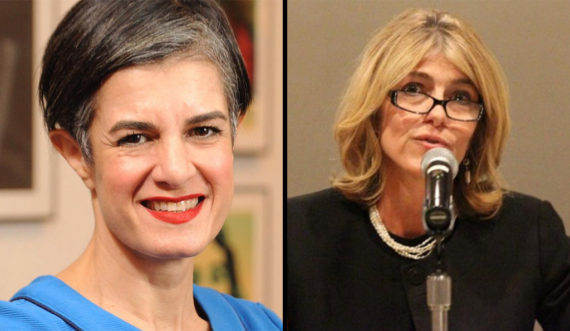
Reformer Parisa Tafti (left) Hopes To Defeat Theo Stamos (right) In Democratic Race.
(6-10-19) Advocates in Arlington, Virginia are working hard to defeat incumbent Commonwealth Attorney Theo Stamos because of her backward treatment of residents with mental illnesses.
Stamos, who has been a prosecutor for thirty years, is being challenged by a criminal justice reformer, Parisa Tafti, in tomorrow’s (June 11th) Democratic primary.
Tafti is one of three candidates seeking to unseat prosecutors in Arlington, Fairfax, and Loudoun Counties in Northern Virginia whose views they see as being retrograde and excessively punitive.
In a strongly worded editorial, The Washington Post endorsed Tafti, a former public defender who is legal director of an innocence-protection organization.
“Ms. Stamos (has been) criticized for backward-thinking policies…we think criticism of Ms. Stamos — her arbitrary restrictions on the discovery process, overcharging of offenses and seeming tone-deafness to implicit bias in law enforcement — is accurate.
Ms. Dehghani-Tafti offers a better choice. Her work on innocence protection gives her unique insights into the criminal-justice system and where improvements need to be made. She is right to want to treat rather than criminalize mental-health problems and drug addiction, and to prioritize crimes such as wage theft and elder abuse over petty, nonviolent offenses.
Her experience has been in protecting innocent people from being wrongly convicted, but she recognizes the need to go after and lock up those who pose a real danger.
Stamos participated in what is one of the cruelest incidents of over-prosecution in Virginia involving a defendant with mental illness.







